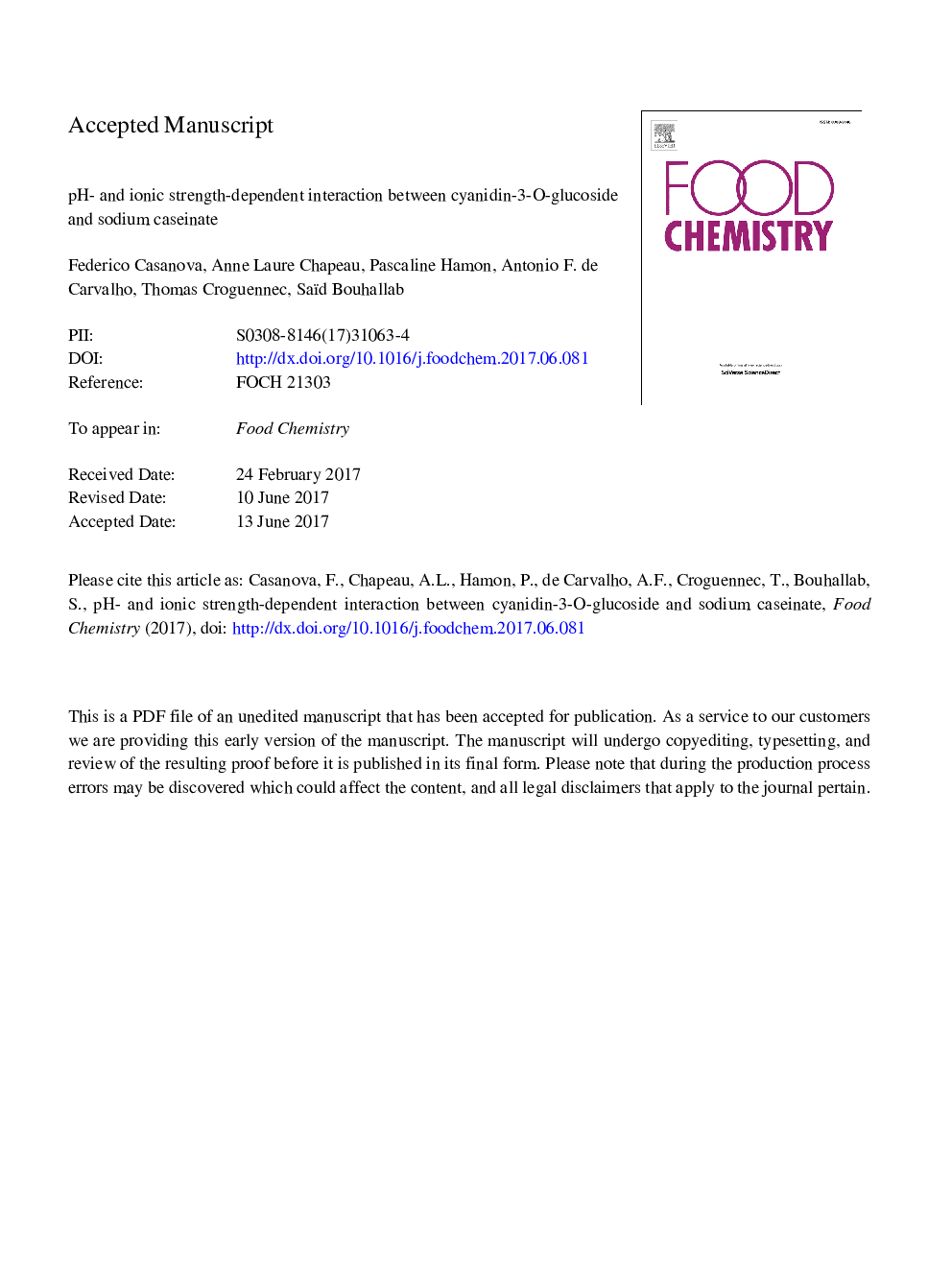| Article ID | Journal | Published Year | Pages | File Type |
|---|---|---|---|---|
| 7584362 | Food Chemistry | 2018 | 27 Pages |
Abstract
Understanding the mechanism of interaction between food proteins and bioactives constitutes the preliminary step to design food grade nanocarriers. We investigated the interaction between cyanidin-3-O-glucoside (C3G), and 20Â nm-sized sodium caseinate nanoparticles (NaCas) at pH 7 and pH 2 by fluorescence spectroscopy and dynamic light scattering. The characterization of the C3G-NaCas interaction indicated that the fluorescence quenching mechanism was predominantly static. C3G interacted with two sets of binding sites with association constants Ka of 106 and 105Â Mâ1. Electrostatic interactions dominated at pH 7, while hydrophobic effects were the main force at pH 2. Interestingly, the two sets of binding sites were discriminated by ionic strength at pH 7. The binding of C3G slightly modified the average diameter of NaCas nanoparticles without alteration of its surface charge suggesting a complexation of C3G molecules in the internal casein structure. Thus, NaCas constitutes a putative nanocarrier for anthocyanins in new functional foods.
Keywords
Related Topics
Physical Sciences and Engineering
Chemistry
Analytical Chemistry
Authors
Federico Casanova, Anne-Laure Chapeau, Pascaline Hamon, Antonio F. de Carvalho, Thomas Croguennec, Saïd Bouhallab,
